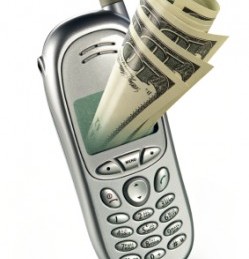The Demise of Cash – More Radical Change Needed
20 June, 2012

Viewpoint
By Brian Lang
In last month’s Comment it was stated that we are fighting for the future of cash, but is creating standards to generate commonalities in the industry, while very desirable,  going to make much of a difference?
The writing is already on the wall. It is reported there are now 6 billion mobile phone subscribers in the world, outnumbering landlines by five to one. In 2009, 55 million people had accessed financial services on their mobiles; by 2015 it is expected to climb to 1.2 billion. Last year 1.5 billion mobile handsets were sold, a third of them smart phones, and in the past three years 300,000 ‘apps’ have been developed and downloaded a combined 11 billion times.
Smart phones are revolutionising personal banking. In the US, where cheques are still common, Chase Bank has developed an iPhone app that lets customers photograph the front and back of a cheque and submit the images via their phone to the bank to be deposited into their account. Elswhere, mobile phones equipped with NFC (near-field communications) technology will allow contactless payments.
There is currently a lot of speculation on how new technologies may affect the use of cash, so perhaps it is helpful to observe the trends in New Zealand as a possible insight to what may happen on a larger scale.
The use of banknotes is definitely slowing. In the ten years from 1999 to 2009 the value of banknotes in circulation rose by around 7.5% per annum, but in the last two years the annual increase has been around 2%. The number of banknotes in circulation rose by 2.2% in 2010/2011, but has been static over the past 12 months.
One of the major commercial banks has just launched an upgrade to its mobile banking app which will allow customers to make rapid payments from smart phones to anyone using the recipients’ mobile phone numbers and email addresses instead of a bank account number. Also, a smaller retail bank has just started advertising an application that will ‘allow payments between individuals by simply bumping phones together, so no more awkward fiddling with notes and coins when it comes to splitting the bill’.
Smart phones are already being used to pay for car parking and on transport systems. In fact it is quite rare these days to see cash tendered with retailers, even for purchases under $10.
What does this mean for the future of cash? If we project forward a generation, say 25 years, then who will be using banknotes and coins? Certainly there is an argument that cash has a place in an emergency, from a natural disaster which knocks out telecommunications to the smart phone running out of battery. Other heavy users of cash are not so attractive, ie. criminals and the black market.
While not in immediate danger of our product becoming extinct, I would contend that the industry, including the issuers, needs to think of what needs to be done to modernise, reduce costs and improve user friendliness. For example authorities should be looking at reducing the number of denominations, eliminating change-only coins, improving durability and security and reviewing tax systems that result in receiving small change at every purchase.
A central bank’s prime charter is to provide stability in the financial system; cash is still an important part of that system and a significant revenue earner for governments through seigniorage. If nothing is done, then inevitably we will see the demise of banknotes and coin sooner rather than later.










